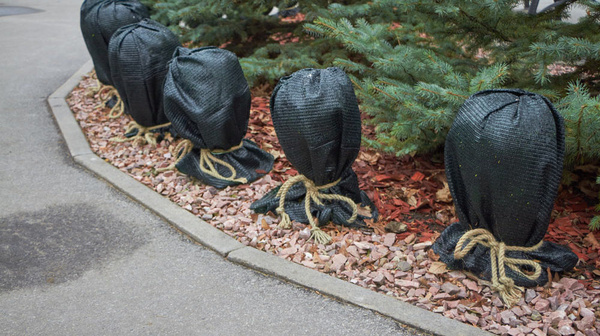
Protecting Florida Plants in Winter
Many sun-loving Florida plants do well in the heat but are not hardy enough to withstand an overnight freeze. Keep an eye on the forecast and prepare your plants properly to keep them happy and healthy all winter long.
Our state is well-known for its warmth, and the plants that thrive here are accustomed to the never-ending sun. That can be a real problem when overnight temperatures drop below 32 degrees.
The first line of defense is an accurate forecast. A heads-up of an impending freeze is vital if you want to prepare your plants well. And don’t wait until nightfall; set your Florida flora up for success by beginning preparations as early in the day as possible.
Read on for a few tips to keep tropical and temperate plants happy and healthy in the winter.
Protecting Ground Plants
On the day before a cold night, the following will help protect plants in the ground:
- Turn sprinklers off to avoid overnight watering. No plant will appreciate showers of freezing water on a frigid night.
- Generously water plants in the heat of the day. Moist soil retains heat around vulnerable plant roots that are often just below ground level.
- Add mulch around plant bases to hold additional warmth.
- Cover or insulate plants.
How to Cover Plants Correctly
Covers and insulation only work as well as they are applied. Small plants can be easily covered by flower pots, buckets, stock pots, tubs, cloches, or milk jugs (minus the neck). For slightly larger plants, try garbage cans.
A sheet or frost blanket is another option, but ensure that it comes all the way to the ground. Stake it in place so it won’t blow off overnight.
Insulate taller shrubs or plants that can’t be easily covered. Loosely tie it up, then set several stakes in the ground around the shrub; they’ll need to be at least as tall as the plant. The stakes are then wrapped in burlap, plastic, or cloth, and filled with loose leaves, hay, or straw.
Protecting Hanging and Potted Plants
The easiest way to protect these plants is to bring them inside the house or garage. Those that can’t be brought in should be grouped together in an area protected from the wind. At night, fences and walls release the heat they’ve absorbed during the day; nearby potted plants will benefit from this warmth on cold nights.
Cover these plants in the same way you would ground plants. Bedsheets fastened with clothespins will do the trick if you run out of other coverings, but make sure they reach the ground.
Keep in mind that roots near the side of a hanging pot will be most vulnerable to the cold. If not put on the ground and covered correctly, parts of the root system may turn spongy and black. It won’t kill the plant, but its vitality will be sapped until new roots grow.
The Day After a Freeze
Make sure to remove any plastic coverings you might have used. They protect your plants from freezes, but the midday sun bakes and browns vegetation that’s still surrounded by plastic.
You can remove brown leaves, but don’t touch branches that appear to be dead. Spring often brings new life to these branches. Prune the portions that don’t have new growth in spring.